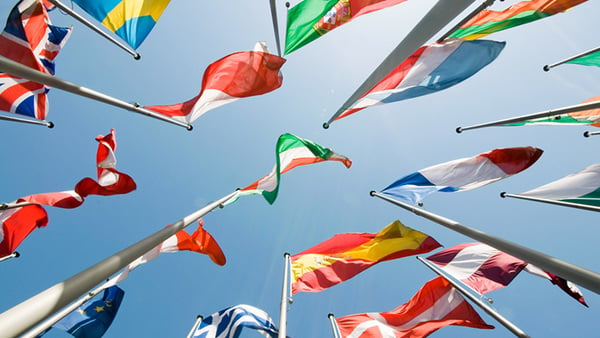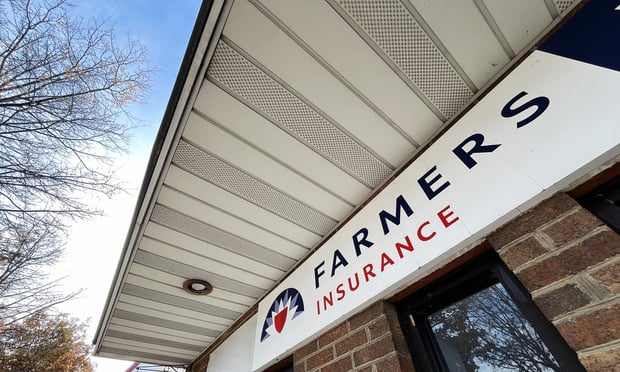The latest buzzword to float around the insurance industry, especially in communications targeted to consumers is “P2P” or peer-to-peer.
In the technology world, in a P2P network, the “peers” are computer systems that are connected to each other via the internet, according to Tech Terms. Files can be shared directly between systems on the network without the need of a central server.
The idea has been adopted by some financial services companies that use social technology to directly connect would-be borrowers with available lenders, bypassing traditional banks. Think Match.com for debtors and creditors. Now, it's expanded into the insurance industry with tech start-ups like Lemonade and Uvamo, bypassing traditional insurance carriers, agents and brokers.
As defined by the National Association of Insurance Commissioners (NAIC):
Peer-to-peer (P2P) insurance is a new innovation that allows insureds to pool their capital, self-organize and self-administer their own insurance. The core idea of P2P is that a set of like-minded people with mutual interests group their insurance policies together introducing a sense of control, trust, and transparency while at the same time reducing costs.
The NAIC believes that P2P insurance should be regulated by state insurance departments like any other insurance company; however, each state is likely to have its own rules when it comes to P2P insurance.
So what do insurance agents, brokers and buyers need to understand about P2P insurance? Here are seven key points to keep in mind, according to Value Penguin:

(Photo: iStock)
|1. P2P is a new business model
P2P is in its infancy and providers and coverage areas, are very limited. Lemonade Insurance, licensed just four months ago, so far provides home and homeowners' insurance to the New York City metro area.
As explained by Value Penguin, P2P companies disrupt the traditional model of insurance. In that centuries-old business model, the insurer defines the risk applicants pose, charges them a premium according to that calculation, and then take responsibility for paying claims, whether their pool of customers makes such payments profitable or not. With the P2P model, the companies use social technology to assemble a circle of buyers that join together and pool their money in the form of premiums. The pool then builds up and can be tapped into if someone in the circle were to file a claim. The entire pool of customers can benefit if claims fall short of the revenue in premiums.
According to Lemonade, it “reverses the traditional insurance model. We treat the premiums you pay as if it's your money, not ours. With Lemonade, everything becomes simple and transparent. We take a flat fee, pay claims super fast, and give back what's left to causes you care about.”
Uvamo, which has yet to launch, describes itself this way:
UVAMO started with the idea that shopping for insurance should be as easy as shopping for a flight or a hotel room. Using UVAMO users can quickly and easily request quotes from the carriers of their choice and compare them from the comfort of the UVAMO application.

(Photo: Shutterstock)
|2. P2P has been successful in other countries
Although the P2P model is relatively new to the U.S., similar P2P models have emerged in other countries, including Germany (Friendsurance), the United Kingdom (Guevara) and China (TongJuBao), according to the NAIC, who say they are closely monitoring the emergence of P2P.
In July 2016, according to the TongJuBao website, U.S. entrepreneur Timothy Li of Kuber Financial, based in Orange, Calif., and Asian-French entrepreneur Tang Loaec, of Hong Kong-based P2P Protect P2PP) announced a P2P Insurance joint venturing “bringing risk sharing to the American users.”
The statement says “They are determined to address the pain of insurance users, seeking for a better treatment, and believe that P2PP's vision of Community Risk Sharing can provide a drastically improved experience.” They plan to build mobile and on-line platforms intended to bring together “communities of users” to share specific risks with the benefit of
- Fairer cost,
- Fairer treatment,
- More transparency, and
- More user empowerment.
Related: 10 trends expected to shape the casualty insurance market in 2017 
(Photo: Bigstock)
|3. P2P is digital and fast
Lemonade has already increased the speed and ease by which New York-area residents can get homeowners' and renters' insurance for the home they own or the possessions in their rental apartment. Even in New York, with its metropolitan population of more than 15 million people, it's difficult to get an online quote for insurance, Value Penguin says. You generally still need to call an agent, provide information to them over the phone, and wait to get the quote.
With Lemonade, you can log-in to their app and receive a quote in less than three minutes. You can then pay online, and have the coverage begin immediately.

(Photo: Shutterstock)
|4. Part of the proceeds are shared
With P2P insurance, if none of the people in the “social pool” file a claim, part of the money is returned to them as a dividend. This model is intended to build trust and transparency between the insurer and the insured, making the insured to stay with the company and continually pay premiums, Value Penguin explains. Lemonade's offering even has a social responsibility aspect, through the company's pledge to donate at least 20 percent of unused premiums to a charity of the customer's choice.
In many ways, this business model borrows concepts from a mutual insurance company. As explained by the NAIC, “Mutual insurance companies by definition are owned entirely by their policyholders. Any profits earned are returned to policyholders in the form of dividend distributions or reduced future premiums.”

(Photo: Shutterstock)
|5. It can be inexpensive
Germany-based Friendsurance, considered as the first P2P insurance company globally, notes that for 2013 and 2014 more than 80 percent of the customers who took advantage of their claims-free bonus received some of their premiums back. In the property insurance line, the average cash back was 33 percent of the paid premiums.
Part if the success of this model in Britain, Germany and China has been highly competitive premiums. Lemonade has launched with aggressive pricing, as well. It promises renters insurance for “$5 and up,” which compares with a typical rate of at least $20 a month in New York, even for basic coverage. And its homeowners' insurance begins at $35 a month, where New York-area premiums from traditional providers are usually upwards of $50 per month.

(Photo: Shutterstock)
|6. Some potential problems are ahead
P2P insurance is expected to have a slow start in the United States because of individual state regulation. The 52 U.S. jurisdictions (50 states, the District of Columbia and Puerto Rico) have varying legal and regulatory requirements that each new P2P company will have to meet.
As with traditional insurance policies, a P2P policy in Missouri may have to be changed dramatically in nearby Kansas for the P2P company to be profitable in both. It's an open question as to how well the insurance startups can navigate that regulatory patchwork to become viable competitors to traditional insurance carriers. As Value Penguin points out, in Britain and Germany, by contrast, regulation (and therefore the market itself) is national.
Another valid point raised by Value Penguin is the startups' ability to manage risk as they grow. As their networks begin to encompass millions of people, the composition might change in a way that endangers those low premiums and appealing perks.
On the other hand, says Value Penguin, the field could also expand, potentially to include auto insurance, where there are already some new innovative digital players, such as Metromile.

(Photo: Shutterstock)
|7. There appears to be little risk to trying P2P insurance
As with any new business model, there are likely to be more questions than answers about P2P insurance. But that won't necessarily deter consumers from giving it a try, especially if they're currently uninsured — as more than 6 in 10 renters are, for example, Value Penguin says.
Although they differ in some key ways from traditional insurers, the P2P startups are still required to comply with regulations that require them to have sufficient cash in reserve to pay off all anticipated customer claims. This should protect anyone who has a claim from not being able to collect full damages.
What remains to be seen is how P2P insurance companies will handle claims when there are challenges to the claim — which could be a significant point of differentiation for agents and brokers.
Save
Save
Want to continue reading?
Become a Free PropertyCasualty360 Digital Reader
Your access to unlimited PropertyCasualty360 content isn’t changing.
Once you are an ALM digital member, you’ll receive:
- Breaking insurance news and analysis, on-site and via our newsletters and custom alerts
- Weekly Insurance Speak podcast featuring exclusive interviews with industry leaders
- Educational webcasts, white papers, and ebooks from industry thought leaders
- Critical converage of the employee benefits and financial advisory markets on our other ALM sites, BenefitsPRO and ThinkAdvisor
Already have an account? Sign In Now
© 2024 ALM Global, LLC, All Rights Reserved. Request academic re-use from www.copyright.com. All other uses, submit a request to [email protected]. For more information visit Asset & Logo Licensing.








